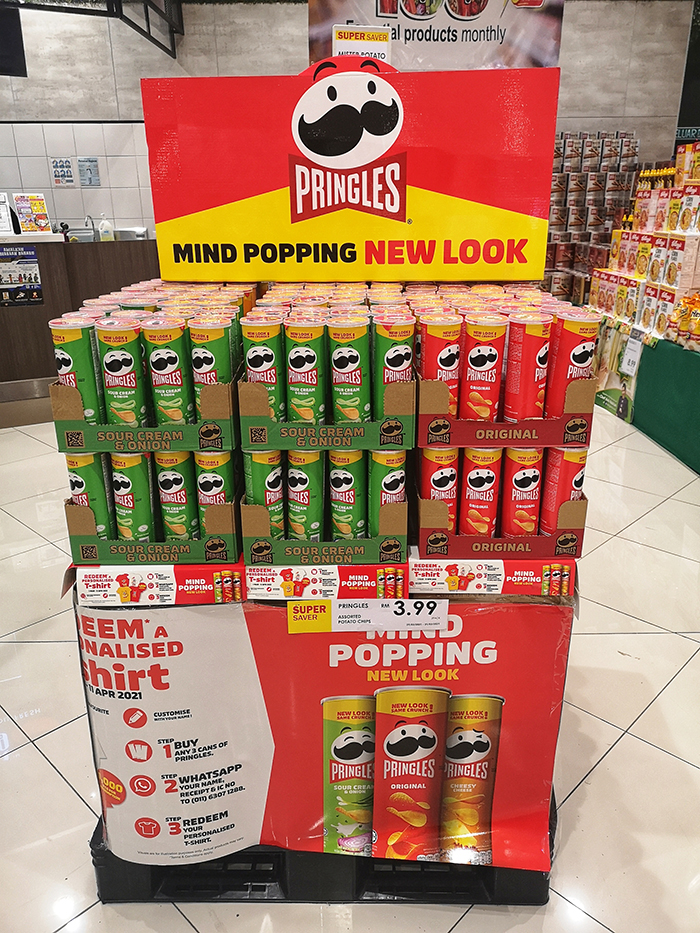It’s happening. Brands are starting to demand better recyclability of temporary retail display and packaging. So do you check out as a supplier?
Towards the end of last year we reported that well-known sustainability consultant Steve Lister had teamed up with POPAI on research into the recycling of temporary display and packaging within retail - research that confirmed what we already sort of knew, that most is not recycled despite brands and retailers saying it’s an important issue. The topic was explored in more detail in a recent Antalis webinar entitled ‘Sustainability in Retail: Past, Present and Future’, the key points of which are worth digesting - and acting upon.
For a start, though nearly all respondents to the POPAI poll confirmed they had corporate sustainability goals, only about two thirds said they had specific measurable targets for display and secondary packaging - surprising high really given the confusion that abounds.
While retailers are keen to meet their own recycling targets and reduce their landfill tax liability, only 41% said they receive information about end-of-use recycling from their suppliers. Half of them thought the materials regularly used in temporary displays could not be recycled - and a fifth thought there were unrecyclable materials used in secondary packaging.
Most brands had no idea how much of the POS display they supply to stores is ultimately recycled - 85% didn’t know what happened to their branded temporary displays.
Almost half (46%) of brands said that all their retail clients specify recycling requirements for the display materials they provide. A further 38% said that most of their retailer partners had provided recyclability specifications. However, 16% were unaware of whether retailers provided them with guidelines or not.
Retailers 100% agreed that temporary display recycling was their responsibility. Even so, some brands said that it was also their responsibility to ensure that displays could be easily recycled. Both felt a responsibility to design these in a way that promotes recycling at end-of-life. And to improve display recycling rates 65% wanted more printed end-of-life recycling instructions on displays and packaging, 43% wanted legislation, 48% more staff training, 52% more data on recycling materials, and 35% wanted a sustainability scoring system to improve the recycling of display and packaging materials.
As we know, around 80% of the environmental impacts of products and services are determined at the design stage, and at the webinar Steve Lister offered up tips to improve end-of-life recyclability. For instance, avoid using self-adhesive labels, multi-layered laminates and PVC components in packaging as even compostable, biodegradable and oxy-degradable plastics can create huge issues for waste management and recycling companies.
For POS, Lister suggested avoiding UV inks, varnishes and double-sided laminates, and to use water-soluble glues rather than hot melt - interlocking even better! Also, where possible, eliminate plastic shelf clips and adhesive on the side cladding of FSDUs, and replace plastic shelf trays and ticket strips with fibre-based materials.
What’s clear is the need for better partnership working across the whole supply chain. Antalis, for example, is working with waste management and carbon offsetting companies and can advise on how its customers and end clients can meet their environmental objectives. It also has its Green Star System rating scheme that considers factors such as the type of raw material used and the recyclability at end-of-life for each product - attributing zero to five stars accordingly.
According to Lister, the trend now is for displays that look more sustainable, with natural textures and the use of materials made from recycled board and alternative materials such as coffee beans, office papers, shells, ocean plastics, yoghurt pots etc.
He believes that modular displays that can be reused/repurposed will increase in popularity, and that Europe is seeing an increase in collapsible, storable displays. Designs that cut out glue, hooks, reduce ink and include interlocking construction with the use of wood or wood fibre materials in their construction are increasingly being sought.
When it comes down to it, knowledge sharing will be paramount in 2022, with the likes of Kellogg’s, Pringles and other big brand names including dismantling and disposal information on their POS displays.
The research certainly confirmed that intentions are good. Sustainability and recycling are high on the agenda for most consumers, retailers, brands and suppliers. Now we all need to buy in to better education, collaboration and knowledge sharing.


